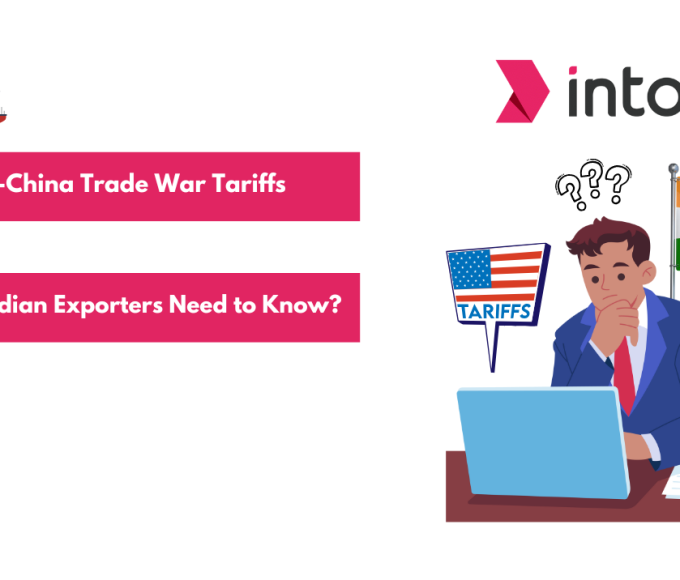In international trade, you’ve likely heard of the HS Code, a key player in making customs clearance smooth and hassle-free. Simply put, the HS Code is a standardized number used to identify products in global trade. It helps customs authorities quickly classify and track goods entering or leaving a country. In India, the correct application of these codes ensures faster processing at customs, preventing delays and fines.
More than 98% of international merchandise is classified under the HS Code system, facilitating smoother import-export processes.
This article explains the importance of the HS Code in customs clearance, how it works within India’s trade framework, and its global relevance. By the end, you’ll understand why this system is vital for international trade and how it streamlines the entire logistics process, ensuring compliance and efficiency every step of the way.
Structure of the HS Code
The HS Code system is structured to provide a detailed and organized classification of products used in international trade. Here’s a breakdown of how it works:
6-Digit Standard Classification
At its core, the HS Code uses a 6-digit number to classify products in a standardized way. This global system is divided into 21 sections, each representing a broad category of goods, such as machinery, chemicals, or textiles. These sections are further split into chapters, headings, and subheadings, creating a hierarchical structure that allows for easy identification of products.
The first two digits represent the chapter (category of goods), the next two digits specify the heading (sub-category), and the final two digits identify the subheading (specific item).
Additional Digit Extensions for India (8-Digit)
In India, the 6-digit HS Code is extended to 8 digits for greater precision. The Indian government adds two more digits to the standard HS Code to further categorize products. These extra digits allow Indian customs to fine-tune product identification, ensuring better tracking and regulation of imports and exports.
For instance, while the 6-digit code may refer to a general product category like “electrical machinery,” the 8-digit code would specify the exact type of machinery.
Systematic Arrangement of HS Codes
HS Codes are arranged in a systematic, logical order based on the nature of the goods. The codes follow a structure that moves from general to specific, starting from broad categories (like raw materials) to more detailed classifications (like specific parts or finished products). This arrangement ensures consistency across all countries.
This system helps customs authorities worldwide quickly identify and process goods, reducing the chances of errors and delays.
Importance of Correct HS Code Classification
Correct HS Code classification is vital in international trade, and its importance cannot be overstated. Here’s why:
- Ensures Compliance with Regulations: Each country has its own customs regulations, taxes, and import/export laws. By using the correct HS Code, businesses can ensure they are complying with these rules. A wrong classification could result in delays, fines, or even the seizure of goods.
- Accurate Duty and Tax Calculation: The correct HS Code directly impacts the customs duty and taxes you’ll pay. Different codes may have different tariff rates, and misclassifying a product could lead to paying more (or less) than required, creating potential legal and financial risks.
- Streamlines Customs Clearance: When goods are classified correctly, customs authorities can process them quickly. It helps in reducing the time your shipment spends in customs, ensuring faster delivery and fewer supply chain disruptions.
- Prevents Delays and Penalties: Incorrect HS Codes often result in customs authorities flagging shipments for inspection, leading to delays and, in some cases, penalties. Proper classification helps you avoid such hassles and ensures that your goods move smoothly through the supply chain.
- Facilitates Global Trade: The HS Code system is internationally recognized, making trade across borders easier and more transparent. By accurately classifying your goods, you help ensure your business can smoothly navigate international regulations, preventing errors that could cause misunderstandings or disputes.
Process of Determining the Correct HS Code
Determining the correct HS Code is crucial for smooth customs clearance and avoiding delays. It involves a systematic strategy to ensure that your products are classified accurately based on their characteristics and use. Here’s a breakdown of the steps to help you navigate the classification process.
Steps to Classify Products Under the Correct HS Code
Classifying products under the correct HS Code requires careful attention to detail. Here’s how you can do it:
- Identify the Product Category: Start by determining the general category under which your product falls. It could be anything from machinery to chemicals or textiles.
- Consult the HS Code Directory: Once you have the category, refer to the HS Code directory or tariff schedule, which breaks down categories into specific sub-categories, headings, and subheadings.
- Match the Product’s Characteristics: Look at the product’s features, function, and material to find the most accurate match. Sometimes, the same product can have multiple classifications depending on its use.
- Verify and Double-Check: Before finalizing the classification, double-check the product description and corresponding HS Code to ensure accuracy.
Use of Online Databases and Tools for Classification
Today, various online resources and tools make HS Code classification simpler and more accurate. One such tool is Intoglo’s AI-powered HTS Code Scanner. This tool allows you to simply take a photo of an item, and it will instantly identify the relevant HS Code. Beyond identifying the code, the tool goes a step further by showing the duty incurred in the USA for that specific HS Code.
If you’re exporting to other countries, the scanner also highlights the importance of understanding customs duties associated with the HS Code, helping you navigate international trade requirements with ease. This technology leverages artificial intelligence to quickly analyze the product and cross-reference it with a vast database of HS Codes, saving you time and reducing human error.
Consultation with Customs Brokers and Experts
Sometimes, determining the correct HS Code can be tricky, especially with complex or niche products. In such cases, it’s a good idea to consult with customs brokers or logistics experts. These professionals have in-depth knowledge of the HS Code system and local customs requirements, ensuring your goods are classified correctly.
For businesses looking for seamless transport and hassle-free customs clearance from India to the USA, Intoglo provides a comprehensive solution. Specializing in end-to-end logistics, Intoglo ensures hassle-free customs clearance for your logistic needs.
Along with door-to-door logistics, Intoglo also takes care of the following:
- Origin CFS and Customs Clearance
- Destination CFS and Customs Clearance
- Own CFS space at Major Ports
- Contracts with major shipping lines
- Direct trucking network in the USA
- 50+ Warehouses for long-term storage
- Pre-screening before shipment departure
Common Challenges in HS Code Classification
Classifying products under the right HS Code isn’t always straightforward. Businesses often face challenges due to the complexity of product distinctions, frequent code updates, and ambiguous classifications. Understanding these hurdles is key to avoiding errors and ensuring smooth customs clearance.
Complexity of Product Differentiation
One of the biggest challenges in HS Code classification is differentiating between products that may seem similar but are classified under different codes. For example, two types of machinery or even similar chemicals can have different codes depending on their specific function, use, or composition.
Accurately distinguishing these subtle differences can be difficult, especially for businesses with a wide variety of products. This makes the classification process time-consuming and prone to errors.
Frequent Updates and Changes in Codes
The HS Code system is updated regularly to accommodate new products, technological advancements, and changes in trade practices. These updates can lead to shifts in product classifications, requiring businesses to stay on top of these changes.
Failing to adapt to the latest updates can result in incorrect classifications, delays, and additional costs. Keeping track of such changes is particularly challenging for companies with global operations or those that import/export a large variety of goods.
Dealing with Ambiguities and Overlapping Categories
Sometimes, products don’t fit neatly into a specific HS Code and may fall into overlapping categories. For instance, a product could be classified under multiple headings depending on its intended use or how it’s processed. In such cases, deciding which code to apply can be ambiguous, especially when the product can serve multiple functions or is a hybrid of different categories.
This ambiguity often leads to confusion and errors, making it difficult to ensure accuracy and compliance in customs declarations.
Regulatory Compliance and HS Code in India
The Harmonized System (HS) Code plays a critical role in international trade, serving as a standardized classification for goods. In India, adherence to regulatory guidelines for using the HS Code is mandatory for all importers and exporters. Ensuring compliance not only streamlines customs procedures but also fosters transparency and efficiency in trade operations.
1. Legal Requirements for HS Code Usage in Imports and Exports
- HS Code Definition: The Harmonized System (HS) Code is an internationally standardized system of names and numbers for classifying traded products. In India, it is essential for all imports and exports.
- Mandatory Usage:
- The use of HS Codes is legally mandated under the Customs Tariff Act 1975.
- Every product being imported or exported must be declared with its specific HS Code in the Bill of Entry (imports) or Shipping Bill (exports).
- Accuracy: Providing an incorrect HS Code can result in penalties, customs delays, or reclassification of goods, which can result in higher duties or fines.
- GST Integration: HS Codes are also linked to India’s Goods and Services Tax (GST) to ensure accurate tax applications.
2. Role of the Central Board of Indirect Taxes and Customs (CBIC)
- Policy Framework: CBIC, under the Ministry of Finance, governs customs, central excise, and GST matters. It ensures the proper classification of goods using the HS Code system.
- Updating Tariff Classifications: CBIC regularly aligns India’s tariff classifications with the World Customs Organization (WCO) guidelines to ensure global standardization.
- Customs Automation:
- Through the Indian Customs EDI System (ICES), CBIC streamlines documentation and HS Code validation.
- CBIC also publishes a Customs Tariff Guide, which provides clarity on applicable duties based on HS Codes.
- Training and Support: CBIC conducts regular workshops and issue circulars to educate stakeholders on proper HS Code classification and regulatory compliance.
3. How Compliance Ensures Smooth Customs Clearance
- Accurate Duty Assessment: Correct HS Code usage ensures that duties and taxes are applied as per the legal tariff, avoiding disputes or delays.
- Prevention of Red Flags:
- Incorrect or mismatched HS Codes can trigger scrutiny or re-inspection of shipments.
- Proper classification reduces the risk of cargo being flagged for violations or under-invoicing.
- Faster Processing: Compliance with HS Code and CBIC regulations leads to expedited customs clearance, avoiding detention of shipments at ports.
- Mitigation of Penalties: Non-compliance can result in heavy penalties under the Customs Act 1962. Adhering to HS Code requirements avoids legal complications.
By ensuring proper classification and compliance with CBIC guidelines, businesses can enhance their trade efficiency, minimize risks, and maintain a smooth supply chain.
Steps in Customs Clearance Using HS Code
Efficient customs clearance is pivotal for smooth international trade, and accurate use of HS Codes plays a vital role throughout the process. Below are the key steps involved:
Step 1: Preparing Documentation with Accurate HS Codes
- Essential Documents: Importers and exporters must include correct HS Codes in key documents such as the Bill of Entry (for imports), Shipping Bill (for exports), and Commercial Invoice.
- Classification Accuracy: Proper HS Code classification is crucial to determining the applicable customs duties, GST rates, and compliance with trade policies, including prohibitions or restrictions.
- Support Tools: The Indian Customs Tariff Guide and CBIC’s online resources help businesses identify the correct HS Codes for their products.
Step 2: Submission and Verification Process by Customs Authorities
- Submission: Documentation, including HS Codes, is submitted electronically via the Indian Customs EDI System (ICES) for customs processing.
- Verification: Customs authorities verify the HS Code against the product description to ensure proper classification. Any mismatches or inaccuracies may trigger detailed scrutiny or reassessment.
- Compliance Check: The HS Code is also cross-checked for compliance with restrictions, licensing requirements, and preferential trade agreements (if applicable).
Step 3: Final Clearance and Goods Release Based on HS Code Assessment
- Duties and Taxes: Customs calculates the applicable duties and taxes based on the declared HS Code. Inaccuracies can lead to reassessment, causing delays or penalties.
- Inspections: If discrepancies or red flags arise, goods may undergo physical inspection or valuation checks. Proper HS Code compliance minimizes such interventions.
- Goods Release: Once the verification and duty payments are complete, customs provides clearance, and the goods are released for delivery or export.
Adhering to these steps with precise HS Code usage not only ensures a hassle-free customs process but also avoids legal complications, reducing costs and transit times.
Conclusion
HS Codes are the backbone of efficient customs clearance in India, ensuring accurate classification of goods, smooth processing, and adherence to international trade regulations. As India’s trade framework evolves, the integration of advanced technologies like AI and automated customs systems will make HS Code utilization even more streamlined and precise, reducing errors and delays.
To succeed in global trade, businesses must prioritize compliance and accuracy in HS Code classification. These practices not only safeguard against penalties but also ensure seamless logistics operations.
For businesses navigating customs clearance, Intoglo offers a one-stop solution for door-to-door shipment from India to the USA and hassle-free customs clearance. With end-to-end logistics, instant rates, global team support, and complete shipment visibility through Glotrack, Intoglo ensures your shipments are handled with efficiency and precision. With AI-driven tools like HTS Code Scanner, Intoglo ensures smooth trade every step of the way.









Leave a comment